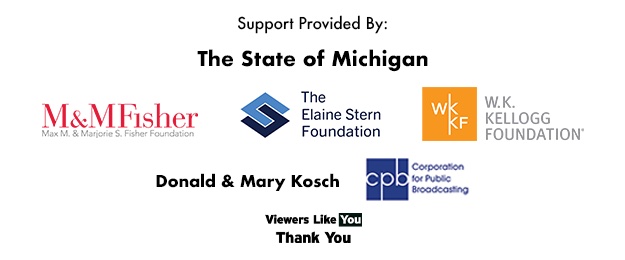Grades
Standard
Provide a concluding statement or section related to the opinion presented.
Write informative/explanatory texts to examine a topic and convey ideas and information clearly.
Introduce a topic clearly, provide a general observation and focus, and group related information logically; include formatting (e.g., headings), illustrations, [...]
Develop the topic with facts, definitions, concrete details, quotations, or other information and examples related to the topic.
Link ideas within and across categories of information using words, phrases, and clauses (e.g., in contrast, especially).
Use precise language and domain-specific vocabulary to inform about or explain the topic.
Provide a concluding statement or section related to the information or explanation presented.
Write narratives to develop real or imagined experiences or events using effective technique, descriptive details, and clear event sequences.
Orient the reader by establishing a situation and introducing a narrator and/or characters; organize an event sequence that unfolds naturally.
Use narrative techniques, such as dialogue, description, and pacing, to develop experiences and events or show the responses of characters [...]
Use a variety of transitional words, phrases, and clauses to manage the sequence of events.
Use concrete words and phrases and sensory details to convey experiences and events precisely.
Provide a conclusion that follows from the narrated experiences or events.
Compare and contrast two or more characters, settings, or events in a story or drama, drawing on specific details in [...]
Determine the meaning of words and phrases as they are used in a text, including figurative language such as metaphors [...]
Explain how a series of chapters, scenes, or stanzas fits together to provide the overall structure of a particular story, [...]
Describe how a narrator’s or speaker’s point of view influences how events are described.
Analyze how visual and multimedia elements contribute to the meaning, tone, or beauty of a text (e.g., graphic novel; multimedia [...]
Compare and contrast stories in the same genre (e.g., mysteries and adventure stories) on their approaches to similar themes and [...]
Quote accurately from a text when explaining what the text says explicitly and when drawing inferences from the text.
By the end of the year, read and comprehend informational texts, including history/social studies, science, and technical texts, at the [...]
Determine two or more main ideas of a text and explain how they are supported by key details; summarize the [...]
Explain the relationships or interactions between two or more individuals, events, ideas, or concepts in a historical, scientific, or technical [...]
Determine the meaning of general academic and domain-specific words and phrases in a text relevant to a grade 5 topic [...]
Compare and contrast the overall structure (e.g., chronology, comparison, cause/effect, problem/solution) of events, ideas, concepts, or information in two or [...]
Analyze multiple accounts of the same event or topic, noting important similarities and differences in the point of view they [...]
Draw on information from multiple print or digital sources, demonstrating the ability to locate an answer to a question quickly [...]
Explain how an author uses reasons and evidence to support particular points in a text, identifying which reasons and evidence [...]
Integrate information from several texts on the same topic in order to write or speak about the subject knowledgeably.
Know and apply grade-level phonics and word analysis skills in decoding words.
Use combined knowledge of all letter-sound correspondences, syllabication patterns, and morphology (e.g., roots and affixes) to read accurately unfamiliar multisyllabic [...]
Use commas and quotation marks to mark direct speech and quotations from a text.
Use a comma before a coordinating conjunction in a compound sentence.
Spell grade-appropriate words correctly, consulting references as needed.
Use knowledge of language and its conventions when writing, speaking, reading, or listening.
Differentiate between contexts that call for formal English (e.g., presenting ideas) and situations where informal discourse is appropriate (e.g., small-group [...]
Determine or clarify the meaning of unknown and multiple-meaning words and phrases based on grade 4 reading and content, choosing [...]
Use context (e.g., definitions, examples, or restatements in text) as a clue to the meaning of a word or phrase.
Use common, grade-appropriate Greek and Latin affixes and roots as clues to the meaning of a word (e.g., telegraph, photograph, [...]
Consult reference materials (e.g., dictionaries, glossaries, thesauruses), both print and digital, to find the pronunciation and determine or clarify the [...]
Demonstrate understanding of figurative language, word relationships, and nuances in word meanings.
Explain the meaning of simple similes and metaphors (e.g., as pretty as a picture) in context.
Recognize and explain the meaning of common idioms, adages, and proverbs.
Demonstrate understanding of words by relating them to their opposites (antonyms) and to words with similar but not identical meanings [...]
Acquire and use accurately grade-appropriate general academic and domain-specific words and phrases, including those that signal precise actions, emotions, or [...]
Grades
Standard
Provide a concluding statement or section related to the opinion presented.
Write informative/explanatory texts to examine a topic and convey ideas and information clearly.
Introduce a topic clearly, provide a general observation and focus, and group related information logically; include formatting (e.g., headings), illustrations, [...]
Develop the topic with facts, definitions, concrete details, quotations, or other information and examples related to the topic.
Link ideas within and across categories of information using words, phrases, and clauses (e.g., in contrast, especially).
Use precise language and domain-specific vocabulary to inform about or explain the topic.
Provide a concluding statement or section related to the information or explanation presented.
Write narratives to develop real or imagined experiences or events using effective technique, descriptive details, and clear event sequences.
Orient the reader by establishing a situation and introducing a narrator and/or characters; organize an event sequence that unfolds naturally.
Use narrative techniques, such as dialogue, description, and pacing, to develop experiences and events or show the responses of characters [...]
Use a variety of transitional words, phrases, and clauses to manage the sequence of events.
Use concrete words and phrases and sensory details to convey experiences and events precisely.
Provide a conclusion that follows from the narrated experiences or events.
Compare and contrast two or more characters, settings, or events in a story or drama, drawing on specific details in [...]
Determine the meaning of words and phrases as they are used in a text, including figurative language such as metaphors [...]
Explain how a series of chapters, scenes, or stanzas fits together to provide the overall structure of a particular story, [...]
Describe how a narrator’s or speaker’s point of view influences how events are described.
Analyze how visual and multimedia elements contribute to the meaning, tone, or beauty of a text (e.g., graphic novel; multimedia [...]
Compare and contrast stories in the same genre (e.g., mysteries and adventure stories) on their approaches to similar themes and [...]
Quote accurately from a text when explaining what the text says explicitly and when drawing inferences from the text.
By the end of the year, read and comprehend informational texts, including history/social studies, science, and technical texts, at the [...]
Determine two or more main ideas of a text and explain how they are supported by key details; summarize the [...]
Explain the relationships or interactions between two or more individuals, events, ideas, or concepts in a historical, scientific, or technical [...]
Determine the meaning of general academic and domain-specific words and phrases in a text relevant to a grade 5 topic [...]
Compare and contrast the overall structure (e.g., chronology, comparison, cause/effect, problem/solution) of events, ideas, concepts, or information in two or [...]
Analyze multiple accounts of the same event or topic, noting important similarities and differences in the point of view they [...]
Draw on information from multiple print or digital sources, demonstrating the ability to locate an answer to a question quickly [...]
Explain how an author uses reasons and evidence to support particular points in a text, identifying which reasons and evidence [...]
Integrate information from several texts on the same topic in order to write or speak about the subject knowledgeably.
Know and apply grade-level phonics and word analysis skills in decoding words.
Use combined knowledge of all letter-sound correspondences, syllabication patterns, and morphology (e.g., roots and affixes) to read accurately unfamiliar multisyllabic [...]
Use commas and quotation marks to mark direct speech and quotations from a text.
Use a comma before a coordinating conjunction in a compound sentence.
Spell grade-appropriate words correctly, consulting references as needed.
Use knowledge of language and its conventions when writing, speaking, reading, or listening.
Differentiate between contexts that call for formal English (e.g., presenting ideas) and situations where informal discourse is appropriate (e.g., small-group [...]
Determine or clarify the meaning of unknown and multiple-meaning words and phrases based on grade 4 reading and content, choosing [...]
Use context (e.g., definitions, examples, or restatements in text) as a clue to the meaning of a word or phrase.
Use common, grade-appropriate Greek and Latin affixes and roots as clues to the meaning of a word (e.g., telegraph, photograph, [...]
Consult reference materials (e.g., dictionaries, glossaries, thesauruses), both print and digital, to find the pronunciation and determine or clarify the [...]
Demonstrate understanding of figurative language, word relationships, and nuances in word meanings.
Explain the meaning of simple similes and metaphors (e.g., as pretty as a picture) in context.
Recognize and explain the meaning of common idioms, adages, and proverbs.
Demonstrate understanding of words by relating them to their opposites (antonyms) and to words with similar but not identical meanings [...]
Acquire and use accurately grade-appropriate general academic and domain-specific words and phrases, including those that signal precise actions, emotions, or [...]


